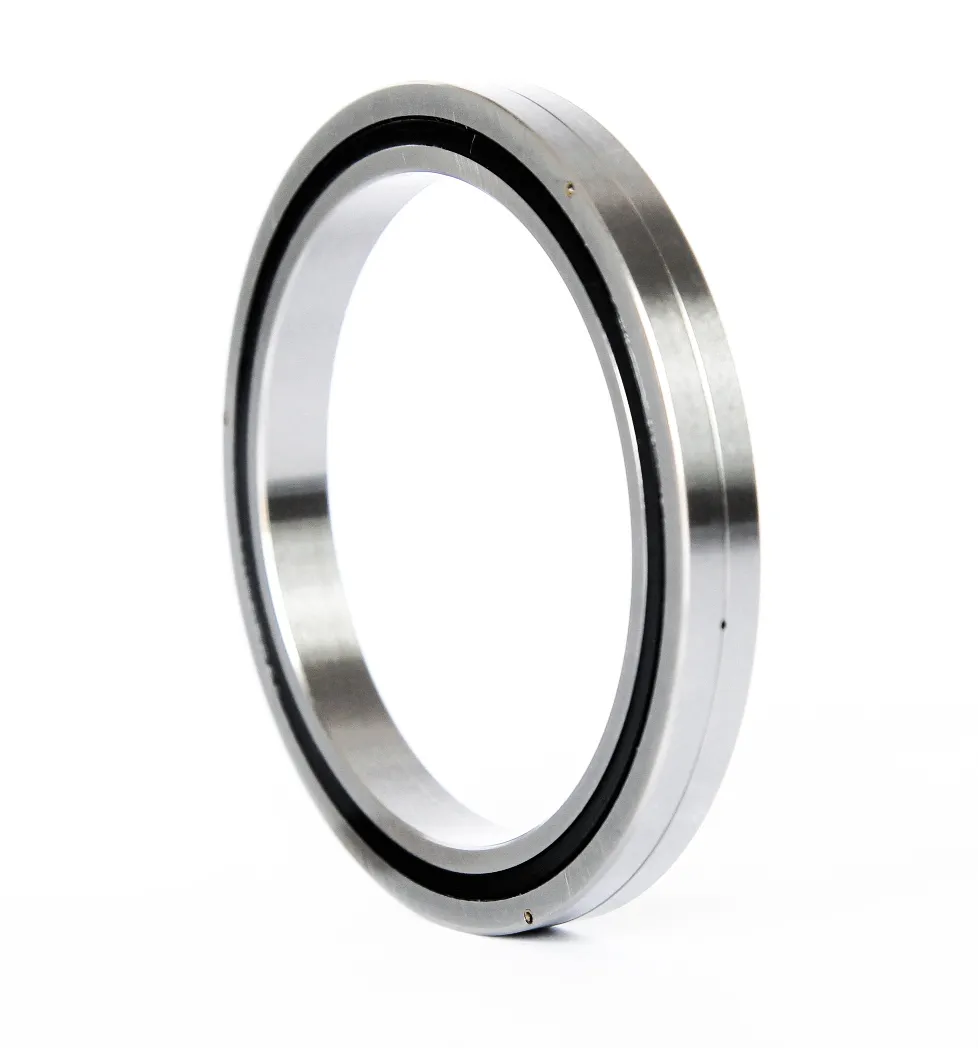time:Aug 07, 2024 source:Luoyang AVE Precision Bearing Co., Ltd.
Bearings are the core components of humanoid robot joints. The rotational and linear drive joints of humanoid robots are expected to significantly increase the demand for bearings. The humanoid robot adopts angular contact ball bearings, crossed cylindrical roller bearings, ball bearings, and four point contact ball bearings in the selection of bearings based on its published design drawings for rotary and linear actuators.
Joint connection:
Generally, one bearing is used at each end, such as deep groove ball bearings and four point angular contact ball bearings for linear joints, and cross roller bearings for rotating joints. The harmonic reducer uses one cross roller bearing and one flexible bearing. The input and output ends of the planetary reducer use ball bearings, and needle roller bearings are also required.
The RV reducer includes thin-wall angular contact ball bearings for the main bearings, thin-wall taper roller bearings for eccentric shaft positioning and main body support, cylindrical roller needle roller cage components for cycloidal wheel support, and thin-wall deep groove ball bearings for gear support. The RV reducer uses 3 * 2 needle roller bearings, 3 * 2 taper bearings, and 1 angular contact bearing. Except for RV reducers and harmonic reducers, ball bearings are mainly used in other positions of humanoid robots, such as planetary reducers, hollow cup motors, and joint connections. The hollow cup motor contains two small ball bearings, with low barriers and small volume and unit value.

The biggest advantage of humanoid robots is their versatility, which can meet the needs of both B and C customers. The vast market space will open up the second growth curve of the bearing industry. At present, the global humanoid robot industry is still in its early stages, with few market participants and limited application scenarios. In the coming years, with the advancement of technology and increasing investment in research and development, the demand and commercialization of humanoid robots will be further promoted. More and more market participants will enter the humanoid robot solution industry. Institutions predict that by 2026, the global market size for humanoid robot solutions will reach $8 billion, accounting for 11.8% of the global market size for intelligent service robot solutions.
Bearings as the components that can play a fixed role and reduce the friction coefficient of loads in mechanical transmission. They reduce the mechanical load friction coefficient of transmission by supporting the mechanical rotating body. Bearings mainly support the rotating shaft in motors. The specific structural configuration of motor bearings is usually selected based on the load, speed, and other requirements of the motor. Due to the various structures and installation methods of the motor, the corresponding internal bearing load conditions also vary. Bearings are mainly matched with reducers in industrial robots to achieve various transmissions.
The joints of industrial robots are mainly driven by rotational motion, and the two most suitable types of special bearings for industrial robots are equal section thin-wall bearings and cross roller bearings. Among them, thin-wall crossed cylindrical roller bearings have cross roller arrangements, high rotational accuracy, and can withstand the combined effects of radial force, bidirectional axial force, and overturning moment. They are mainly used in joints such as robot arms. Equal section thin-wall bearings have a large number of steel balls and high load-bearing capacity, and are commonly used in robot waist, elbow, and other applications.

The rolling elements of cross roller bearings are generally arranged in a cross pattern with cylindrical or tapered rollers in a single raceway groove. The rollers are separated by brass retainers or engineering plastic isolation blocks, thus having high rotational accuracy, large bearing capacity, small external dimensions, and high rotational speed and rigidity. Bearings need to be customized according to the reducer, and their structure is complex, processing technology is difficult, and assembly accuracy requirements are high.
The manufacturing of robot bearings is complex. Taking cross roller bearings as an example, their processing includes bearing ring processing, roller and cage processing, etc. Among them, the machining of bearing rings requires multiple processes such as turning, grinding, and polishing, while the machining of rollers requires multiple processes such as grinding, turning, and rolling.

The application of four point angular contact ball bearings for robots is very common, and the manufacturing process and equipment difficulty are not high.
The structural principle of cross roller bearings is that cylindrical rollers are arranged in a 90 ° cross arrangement, and the rollers that are perpendicular to each other are isolated by isolation blocks. They are used in conjunction with harmonic reducers and are difficult to manufacture.
The bearings of the harmonic reducer wave generator are required to withstand radial and axial stresses, and the crossed roller bearings have significant advantages compared to traditional ball bearings.
Yiyang Advanced Manufacturing Development Zone, Luoyang City, Henan Province, China.
mark.hu@avebearing.com avebearing01@163.com
+86 15036588800